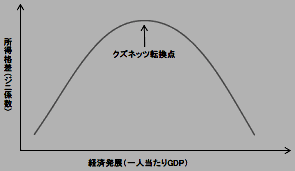エコロジカル・ フットプリント
ecological
footprint

エコロジカル・ フットプリント
ecological
footprint

ウィキ日本語によると「エコロジカル・フットプリント(英: Ecological footprint、EF)とは、地球の環境容量をあらわしている指標で、人間活動が環境に与える負荷を、資源の再生産および廃棄物の浄化に必要な面積と して示した数値である。通常は、生活を維持するのに必要な一人当たりの陸地および水域の面積として示される[2]。以下では、略語EFの表記を用いる」 (→ https://goo.gl/HmYGwD)という。英語では次の ように表現されている。
The
ecological footprint measure how
much nature it takes to support people. It is an
ecological accounting system. It contrasts how much biologically
productive area people use for their consumption to how much
biologically productive area is available (biocapacity). / More
specifically, the
ecological footprint is the biologically productive area needed to
provide for everything people use: fruits and vegetables, fish, wood,
fibers, absorption of carbon dioxide from fossil fuel use, and space
for buildings and roads. Biocapacity is the
productive area that can regenerate what people demand from nature.
Footprint and biocapacity can be compared at the individual, regional,
national or global scale. Both footprint and biocapacity change every
year with number of people, per person consumption, efficiency of
production, and productivity of ecosystems. https://en.wikipedia.org/wiki/Ecological_footprint
詳しくは、https://goo.gl/HmYGwD をみよ。
これと環境収容力(carrying capacity)との関係は、同じく日本語ウィキ「エコロジカル・フットプリント」によると、
「EFの元になる概念は、1990年代初期にカナダのブリティッシュコロンビア大学のウィリアム・リースとマティス・ワケナゲルにより、「収奪 された環境収容力(Appropriated Carrying Capacity, ACC)」として提唱された[3]。この用語が難解であったため、「人間活動が地球環境を踏みつけにした足跡」という比喩に基づき、「エコロジカル・フッ トプリント(EF)」と言う用語に変更された。文献にこの用語が用いられたのは、1992年のリースの論文が初出である[4]」 (→ https://goo.gl/HmYGwD)
この論文は、William E. Ross, 1992. Ecological footprints and appropriated carrying capacity: what urban economics leaves out. より来ている。(http://journals.sagepub.com/doi/abs/10.1177/095624789200400212) よりダウンロード可能。
ちなみに、この情報に関連して、環境クズネッツ曲線(environmental Kuznetz curve)とは、「横軸に1人当たり平均所得を取り、縦軸に環境汚染の程度を取ると、1人当たりの所得増加につれて初めは汚染が増大し、一定レベルに達 した後、やがて低下に転ずる逆U字型の曲線を描く。この曲線を環境クズネッツ曲線と呼ぶ。所得水準の向上につれ、環境規制の技術や制度が整い、人々が環境 をより重視するようになるので、経済活動が活発になっても(なるからこそ)環境汚染が相対的に減少すると解釈されている。しかしこのことから、所得水準の 向上を追求すれば環境問題が解決できる、と楽観することはできないし、不可逆的な被害が生じないとも限らない」(知恵蔵2015:著者は植田和弘, 2007)。
"In
economics, a Kuznets curve graphs the hypothesis that as an economy
develops, market forces first increase and then decrease economic
inequality. The hypothesis was first advanced by economist Simon
Kuznets in the 1950s and '60s" https://en.wikipedia.org/wiki/Kuznets_curve
下図、左は環境クズネッツ曲線:右は、経済成長と所得格差の関係を示す「クズネッツ逆U字曲線」


出典:http://home.hiroshima-u.ac.jp/yhiraya/er/EE_KK.html(左)/
http://www.rieti.go.jp/users/china-tr/jp/ssqs/140827ssqs.html(右)
リンク
文献
その他の情報
Copyright Mitzub'ixi Quq Chi'j, 2016
Do not paste, but
[Re]Think our message for all undergraduate
students!!!